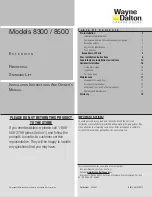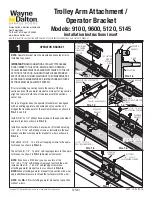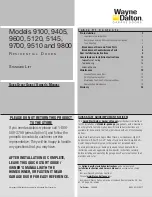
PAGE 9
I NSTALLI NG THE AGA 500-700
G
A
T
E
Amazing Gates strongly recommends the use, AT LEAST, of two sets of photo eye controls (A and B below) to prevent the
gate from closing on a person, pet, vehicle or inanimate object. Photo eyes A and B are only active when the gate is standing
open or during the closing cycle. When the beam of either set is broken, the gate will not close, or if it is already closing it will
stop and reopen. Photo eyes labeled "C" are recommended if you have an entrapment issue when gate is fully open. "C"
should be wired to stop the gate during the OPEN cycle. Photo eyes come in pairs, there is a sending unit and a
receiving/controller unit.
THE CONFIGURATION SHOWN BELOW IS OUR RECOMMENDATION
PHOTO EYES
PHOTO EYE--RECEIVING UNIT A
PHOTO EYE--RECEIVING UNIT B
Best features of photo-eyes are:
1. Ease of installation compared
to inductive loops.
2. Prevention- unlike sensor edges,
photo eyes are aimed at preventing
contact rather than waiting for a
strike to send the operator a signal.
3. Unlike inductive loops, photo eyes sense people
and pets as well as vehicles
PHOTO EYE--SENDING UNIT A
SENDING UNIT B
PHOTO EYE--RECEIVING UNIT C
PHOTO EYE--SENDING UNIT C
ENTRAPMENT REMEDIES------------------
G
A
T
E
SENSOR EDGES
Amazing Gates also recommends the use of sensor edges wherever pinch points are anticipated. The
most common spot for a sensor is on the leading edge of the gate so there is no pinch point at the
catch post when the gate closes comletely.
THE CONFIGURATION SHOWN BELOW IS OUR RECOMMENDATION
SENSOR EDGE A
SENSOR EDGE A prevents a pinch here.
It is also active while the gate is closing
in case of a strike somewhere during
the travel of the gate.
SENSOR EDGE B prevents a
pinch here when gate is open
It is recommended at this point that you examine the instruction manual by
Rutland for this Gate Operator. This manual comes in the GTO carton.
11-24-08

































